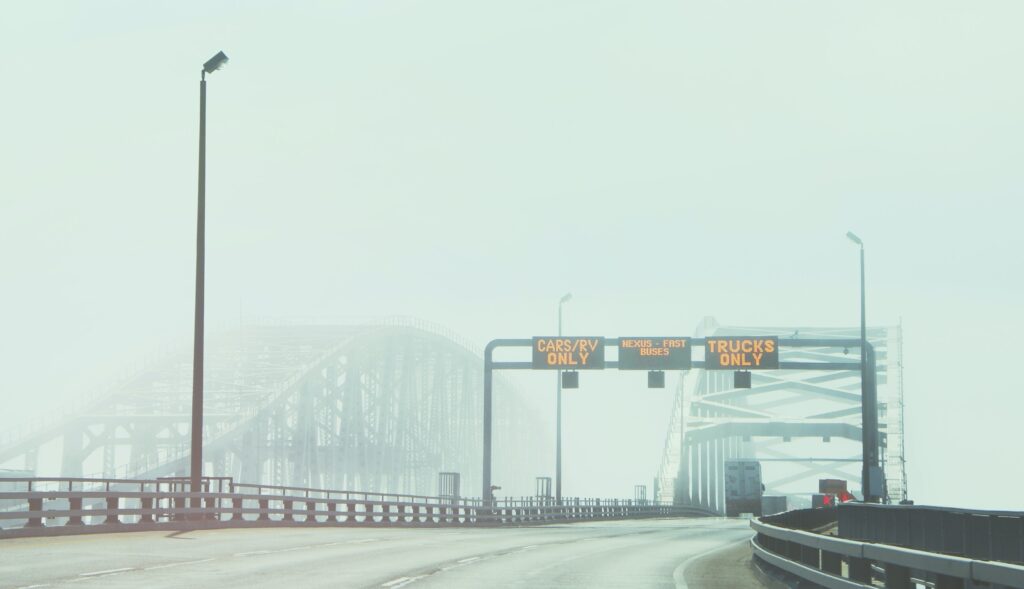The Guggenheim Museum is currently presenting an exhibition titled “Going Dark: The Contemporary Figure at the Edge of Visibility.” This compelling showcase delves into the concept of visibility as experienced by artists of color. Featuring the works of 28 talented individuals, including renowned figures like Faith Ringgold, Charles White, Lorna Simpson, and David Hammons, the exhibition challenges conventional ideas of visibility and prompts visitors to consider its dual role as both a form of surveillance and erasure. Through the use of techniques such as light, darkness, and blurring, the showcased artworks explore the intricacies of racial stereotypes and perceptions. Moreover, the exhibition examines the impact of photography on the classification, colonization, and criminalization of people of color, as exemplified in the thought-provoking works of Lorna Simpson and Stephanie Syjuco. With installations, paintings, drawings, and sculptures that showcase a diverse range of artistic approaches, the exhibition offers a nuanced exploration of visibility and representation for artists of color. Notably, American Artist’s installation titled “Security Theater” employs cameras to delve into the hyper-visibility and surveillance experienced within the confines of museums. Overall, “Going Dark” offers an engaging and multifaceted examination of visibility for artists of color, inviting viewers to question prevailing notions and embrace a more inclusive perspective.

Overview
The Guggenheim Museum is currently hosting an exhibition entitled “Going Dark: The Contemporary Figure at the Edge of Visibility” that delves into the concept of visibility for artists of color. This groundbreaking exhibition showcases the works of 28 exceptional artists, including renowned figures such as Faith Ringgold, Charles White, Lorna Simpson, and David Hammons. “Going Dark” challenges viewers to contemplate what it truly means to be seen and how visibility can serve as both a tool of surveillance and a form of erasure, particularly for individuals belonging to marginalized communities.
Introduction to the exhibition
“Going Dark” seeks to push the boundaries of conventional notions surrounding visibility and representation. By placing artists of color at the forefront, the exhibition seeks to highlight their experiences, perspectives, and creative endeavors. Moreover, it aims to dismantle the oppressive systems that have historically suppressed and marginalized artists from underrepresented communities. Through an array of mediums, techniques, and narratives, “Going Dark” asserts the importance of visibility and the profound impact it holds within the realm of art and beyond.

Artists featured in the exhibition
The exhibition houses an impressive array of artists whose diverse styles, backgrounds, and artistic practices contribute to a rich exploration of visibility. Recognizable names such as Faith Ringgold, Charles White, Lorna Simpson, and David Hammons grace the walls of the museum alongside emerging talents, bringing a sense of inclusivity and evolution to the exhibition. The combined works of these acclaimed artists offer a dynamic and comprehensive examination of visibility through their unique perspectives, skillful execution, and profound insights.
Themes and questions explored in the exhibition
“Going Dark” engages viewers with a range of themes and questions that invite critical inquiries and contemplation. One key theme is the exploration of how visibility can be both a mode of surveillance and a form of erasure, particularly for artists of color. The exhibition asks viewers to reconsider how individuals from marginalized communities navigate the complexities of being seen, drawing attention to the societal and cultural systems that perpetuate these challenges. The exhibition further investigates the impact of visibility on the perceptions of racial stereotypes and the far-reaching consequences of these perceptions.

Techniques Used to Challenge Visibility
Light and Darkness as Tools of Representation
Many of the artworks showcased in “Going Dark” incorporate light and darkness as deliberate tools to challenge traditional notions of visibility. Through the strategic manipulation of lighting, artists explore the nuances of what is seen and what is hidden. By playing with these elements, artists disrupt the inherent assumptions tied to visibility, unveiling the intricate layers of their subjects and shedding light on the multifaceted nature of representation.
Blurring and Distortion of Images
Blurring and distortion techniques take center stage in several pieces within the exhibition. Artists skillfully employ these techniques to blur the lines between visibility and invisibility and to challenge the viewers’ perception of reality. By purposefully obscuring images, artists confront traditional ways of seeing and disrupt the status quo, encouraging audiences to question the limitations and biases ingrained in the act of looking.
Exploring Racial Stereotypes and Perceptions
Through their artistic expressions, many of the featured artists in “Going Dark” confront racial stereotypes and perceptions head-on. By intentionally engaging with these themes, they seek to challenge preconceived notions and broaden the viewers’ understanding of cultural identity. Through their diverse lens, artists present alternative narratives that aim to dismantle stereotypes and disrupt visibility-based biases that have long plagued marginalized communities.
Photography and Visibility
Role of Photography in Classifying and Colonizing
The exhibition critically examines the role of photography in classifying and colonizing people of color. Artists such as Lorna Simpson and Stephanie Syjuco employ photography as a powerful tool for subverting these historical processes. By deconstructing and reconstructing imagery, these artists confront the viewer with the oppressive legacy of colonial visual representation. Through their work, they demonstrate the urgent need to redefine and reshape the relationship between photography and visibility.
Photography as a Tool for Criminalization
The exhibition also sheds light on the ways photography has been wielded as a tool for criminalizing individuals belonging to marginalized communities. By highlighting artists who use photography to interrogate this issue, “Going Dark” prompts the viewers to engage with the complexities of visibility and surveillance. Through their thought-provoking works, artists invite reflection on the profound impact such visibility can have on the lives of those who are systemically targeted and oppressed.
Interrogating Issues of Visibility through Photography
Throughout “Going Dark,” photography becomes a catalyst for interrogating broader issues of visibility, representation, and cultural erasure. By breaking away from conventional photographic practices, artists within the exhibition experiment with various techniques and approaches to challenge the limitations of visibility. They invite the audience to participate in the exploration of how visibility, or the lack thereof, can affect individual and collective identities. Through photography, artists uncover hidden narratives, expose overlooked perspectives, and empower those who have been historically silenced.

Diverse Artistic Approaches to Visibility
Installations that Examine Hypervisibility and Surveillance
The exhibition showcases installations that offer an immersive and thought-provoking examination of hypervisibility and surveillance. These installations engage viewers by evoking feelings of discomfort and confronting them with a heightened sense of awareness. By subtly altering the environment and harnessing the power of technology, artists challenge visitors to question the role surveillance plays within their own lives and its impact on the visibility of marginalized communities.
Paintings that Challenge Traditional Notions of Visibility
Within “Going Dark,” paintings play a vital role in challenging traditional notions of visibility. Artists employ various techniques, such as unconventional brushwork and non-representational forms, to reimagine visibility in striking and unconventional ways. Through their artworks, these painters disrupt the status quo, evoke emotions, and challenge viewers to venture beyond the familiar and explore fresh perspectives on visibility and representation.
Drawings and Sculptures Exploring Visibility and Representation
The exhibition also presents a diverse range of drawings and sculptures that delve into visibility and representation. These artists employ various materials and techniques to create thought-provoking pieces that challenge the viewer’s preconceptions. From intricate and delicate drawings to captivating and thoughtfully crafted sculptures, these artworks push the boundaries of representation. By exploring visibility through these distinct mediums, artists shed light on the dynamic relationship between representation and visibility.
Notable Artwork: ‘Security Theater’ by American Artist
Concept behind the installation
“Security Theater,” a notable installation within the “Going Dark” exhibition, explores the concept of hypervisibility and surveillance within museums. Created by American Artist, this thought-provoking installation invites viewers to question their own relationship with visibility and the ways in which museums can become sites of surveillance. Cameras are strategically positioned throughout the space, emulating the omnipresence of surveillance, and challenging visitors to consider their own visibility within these institutions.
Exploration of Hypervisibility and Surveillance in Museums
By focusing on the museum as a site of hypervisibility and surveillance, “Security Theater” compels visitors to confront the complexities inherent in their own relationship with visibility. American Artist draws attention to the intensification of surveillance mechanisms employed within museums to address questions of security. Through this exploration, the installation provokes conversations around the potential erasure of individuality and the implications of constant scrutiny within these spaces.
Impact on Visitors’ Perception of Visibility
“Security Theater” deliberately impacts visitors’ perceptions of visibility, illustrating how surveillance and hypervisibility influence their experience within the museum. By introducing the ubiquitous presence of cameras, the installation prompts individuals to reevaluate their own behavior, becoming acutely aware of their visibility and the potential consequences it holds. This heightened self-awareness creates an environment orientated towards cautious self-policing, reflecting the challenges faced by individuals belonging to marginalized communities in their daily lives.

Conclusion
“Going Dark: The Contemporary Figure at the Edge of Visibility” boldly grapples with essential questions surrounding visibility and representation for artists of color. This exhibition challenges traditional notions of visibility through a plethora of mediums, techniques, and perspectives. By shedding light on the complexities of racial stereotypes, surveillance, and cultural erasure, “Going Dark” illuminates the urgent need for greater representation and the reevaluation of visibility within the art world. Through these thought-provoking works, artists reclaim their narratives, challenge oppressive systems, and emerge as agents of change.
Reflections on the Exhibition’s Exploration of Visibility
“Going Dark” serves as a powerful reflection on the intersection of visibility and representation. By shining a light on the experiences of artists of color, the exhibition encourages viewers to reevaluate their own biases and assumptions regarding visibility. Through engaging and diverse artworks, audiences are invited to consider the multifaceted aspects of being seen and the far-reaching consequences it holds for marginalized communities. The exhibition urges individuals to confront the limitations of visibility and actively work towards creating an inclusive and equitable society that disrupts erasure and misrepresentation.
Importance of Representation for Artists of Color
“Going Dark” underscores the critical importance of representation for artists of color, acknowledging that visibility extends beyond mere recognition. The exhibition reveals the historical lack of representation within the art world and the profound impact this has had on diverse communities. By celebrating and elevating artists of color, “Going Dark” offers a platform for their narratives, perspectives, and creative expressions. Representation becomes a conduit for empowerment, breaking down systemic barriers, and challenging the established norms that have silenced and marginalized artists for far too long.
Call for Further Examination of Visibility and Erasure
“Going Dark” concludes with a resounding call for greater examination of visibility and erasure within contemporary art and society. The exhibition serves as a catalyst for ongoing conversations, interrogations, and actions aimed at dismantling the oppressive systems that perpetuate invisibility and misrepresentation. By urging individuals to confront their own biases and actively engage with alternative narratives, “Going Dark” inspires a collective responsibility to reshape the very foundations of visibility. Through continued exploration and dialogue, the exhibition establishes a framework for inclusive representation that acknowledges and embraces the diverse realities and perspectives within our society.

